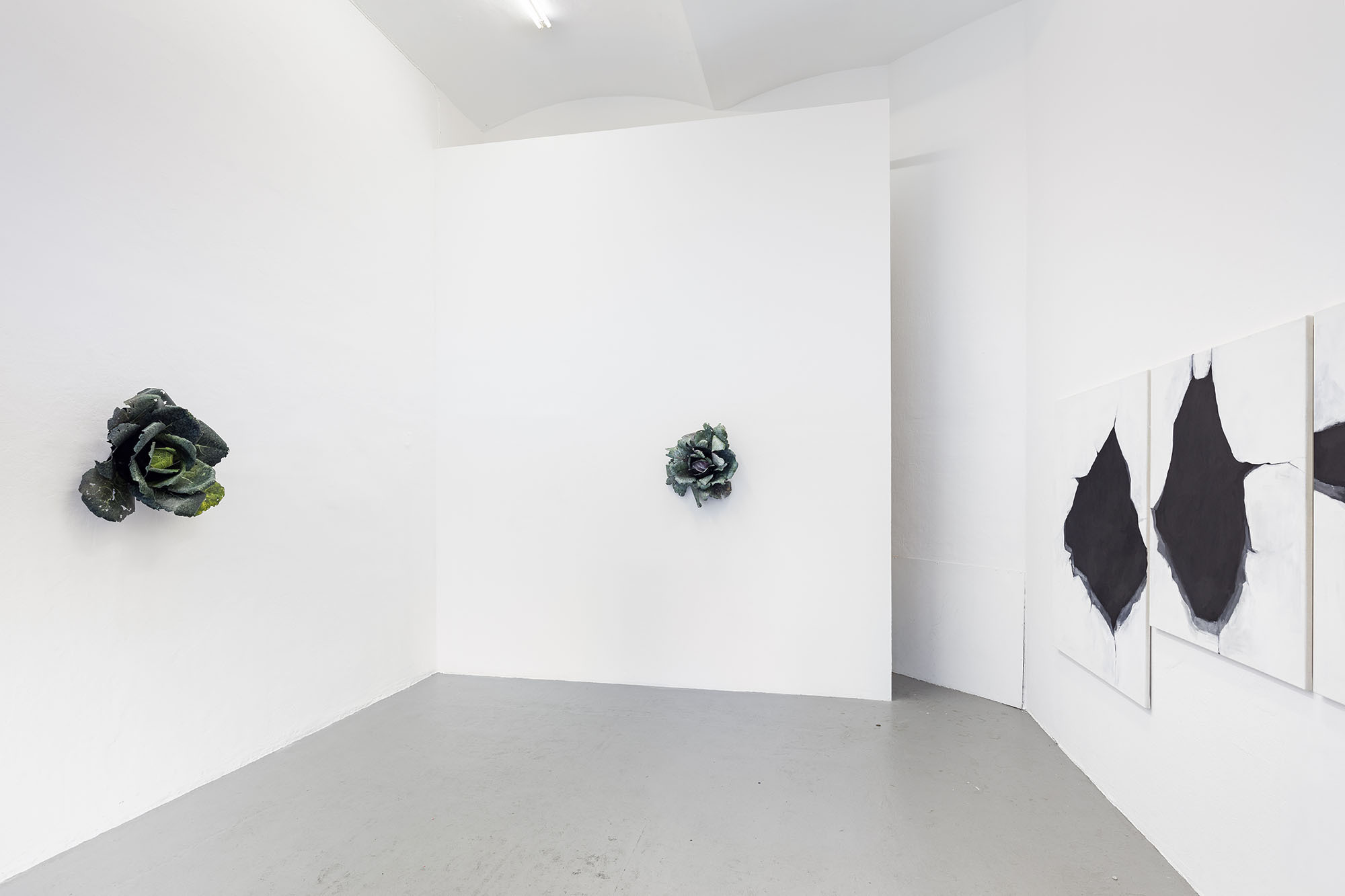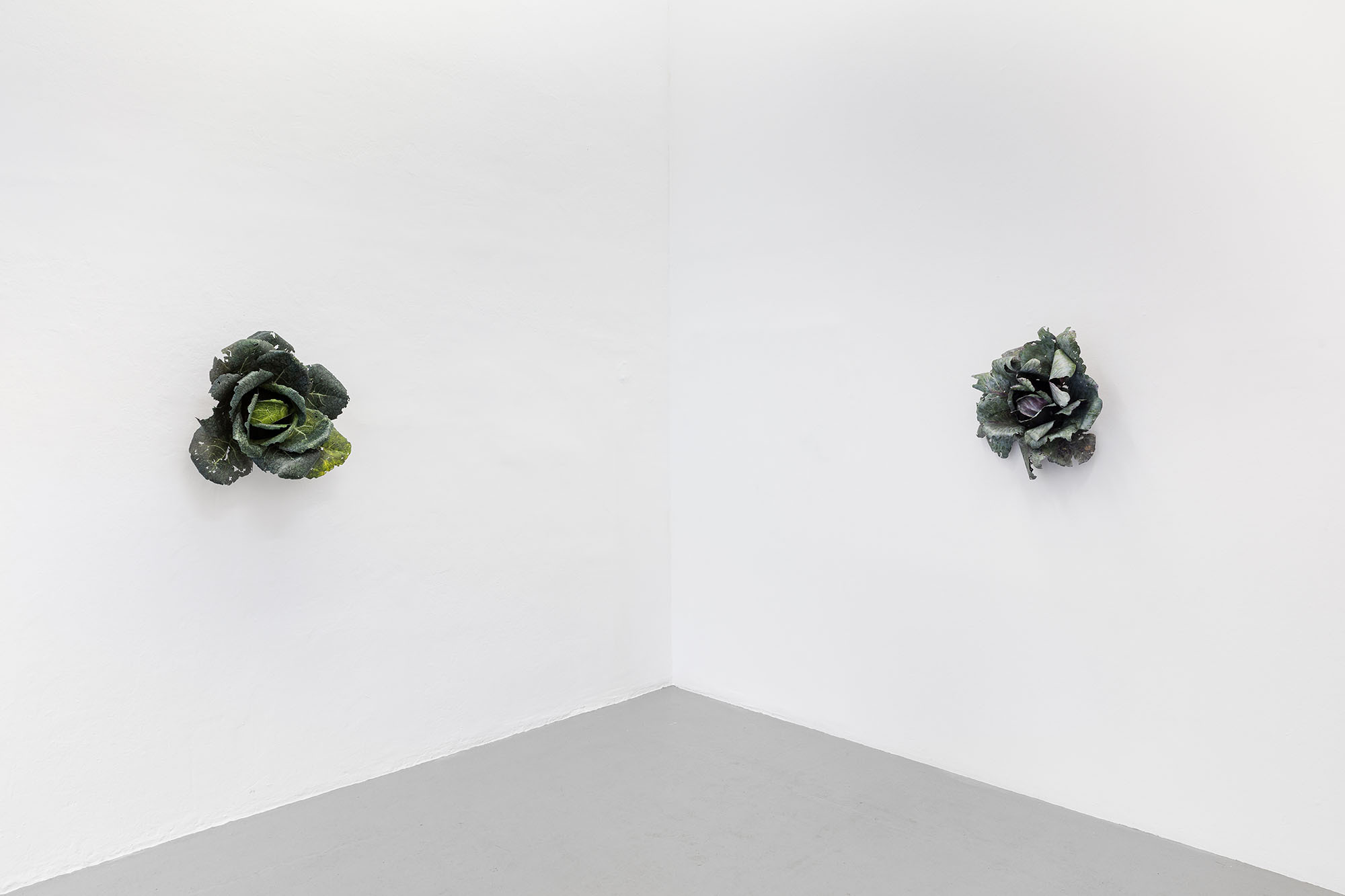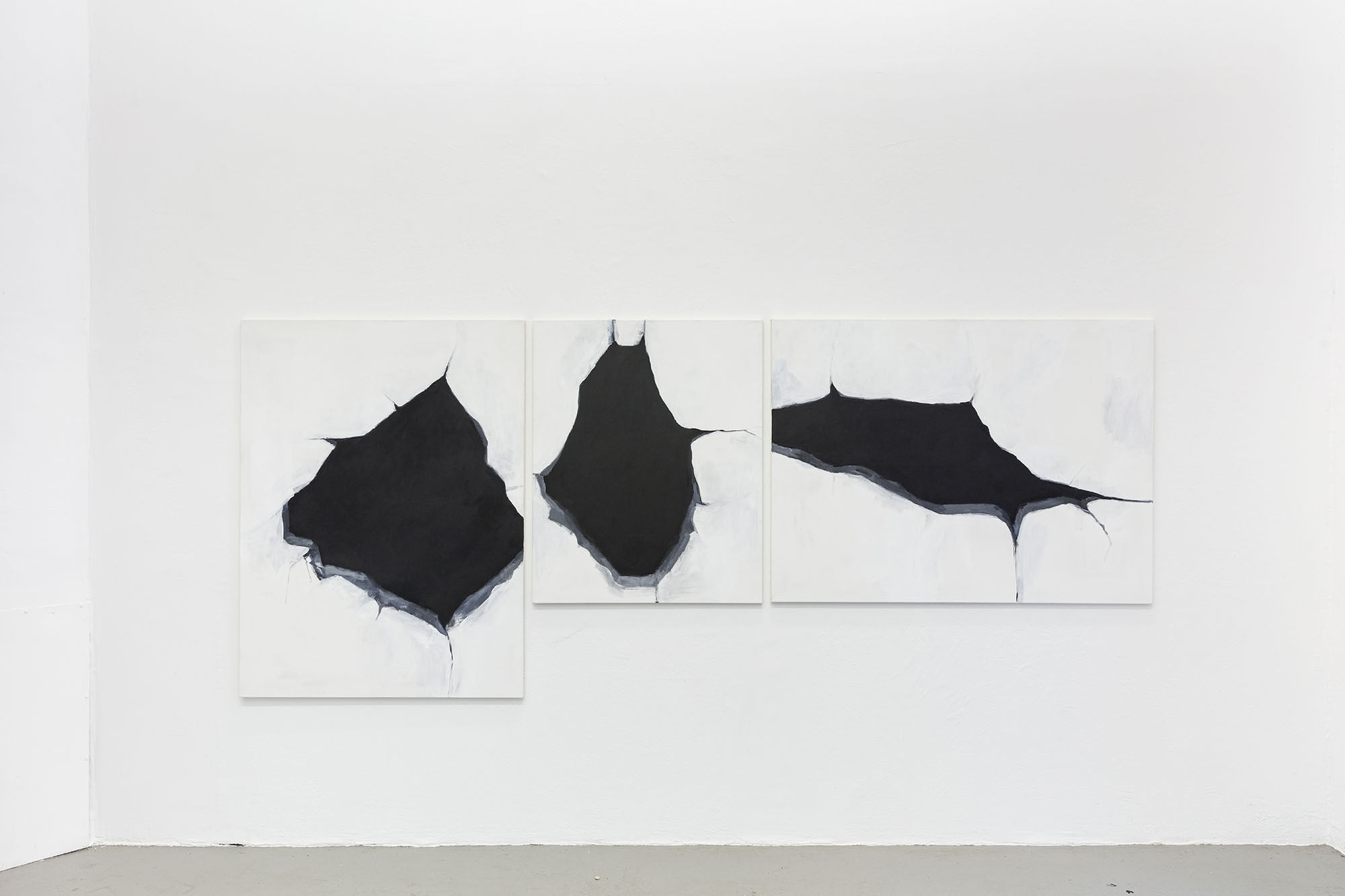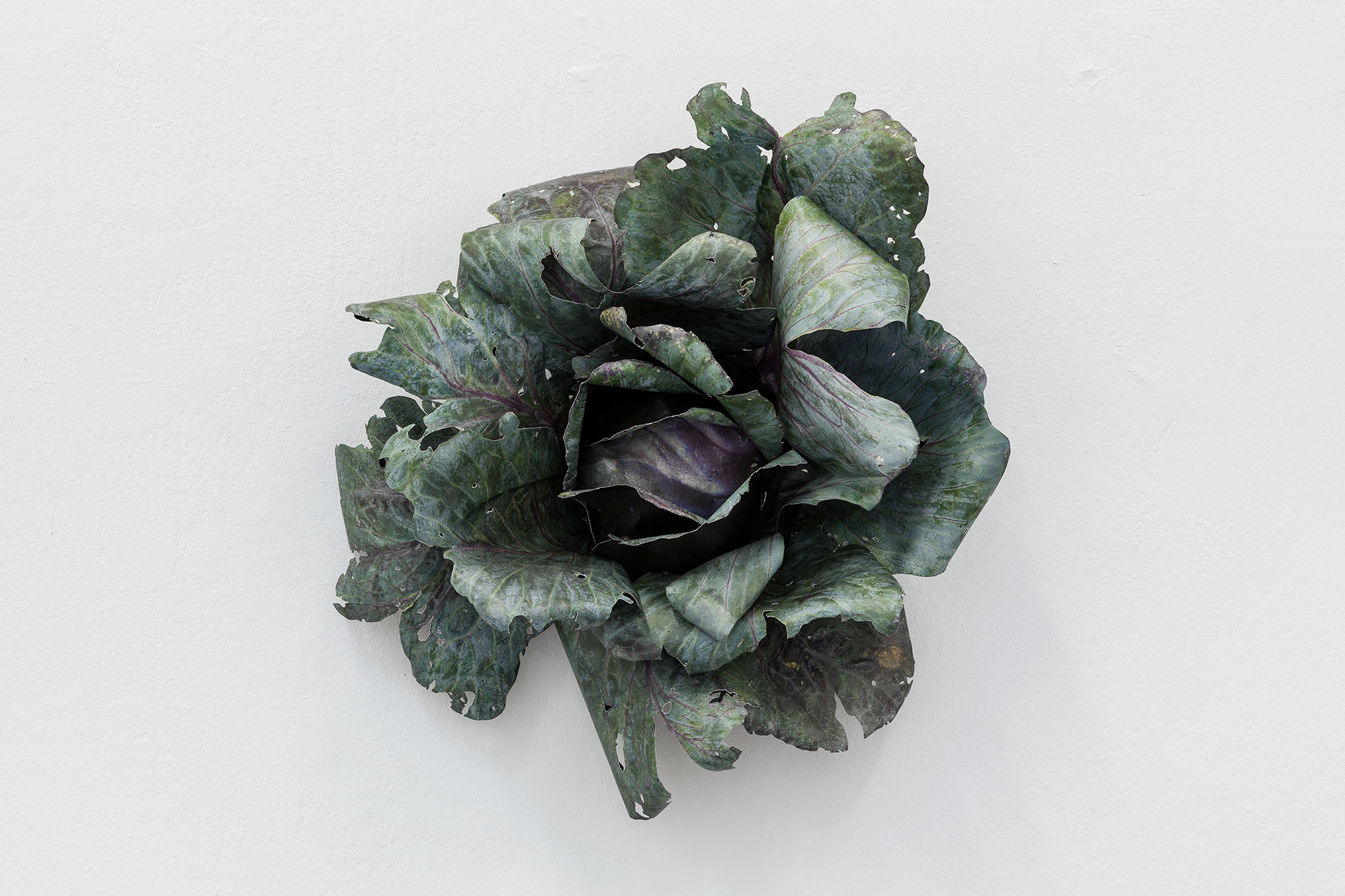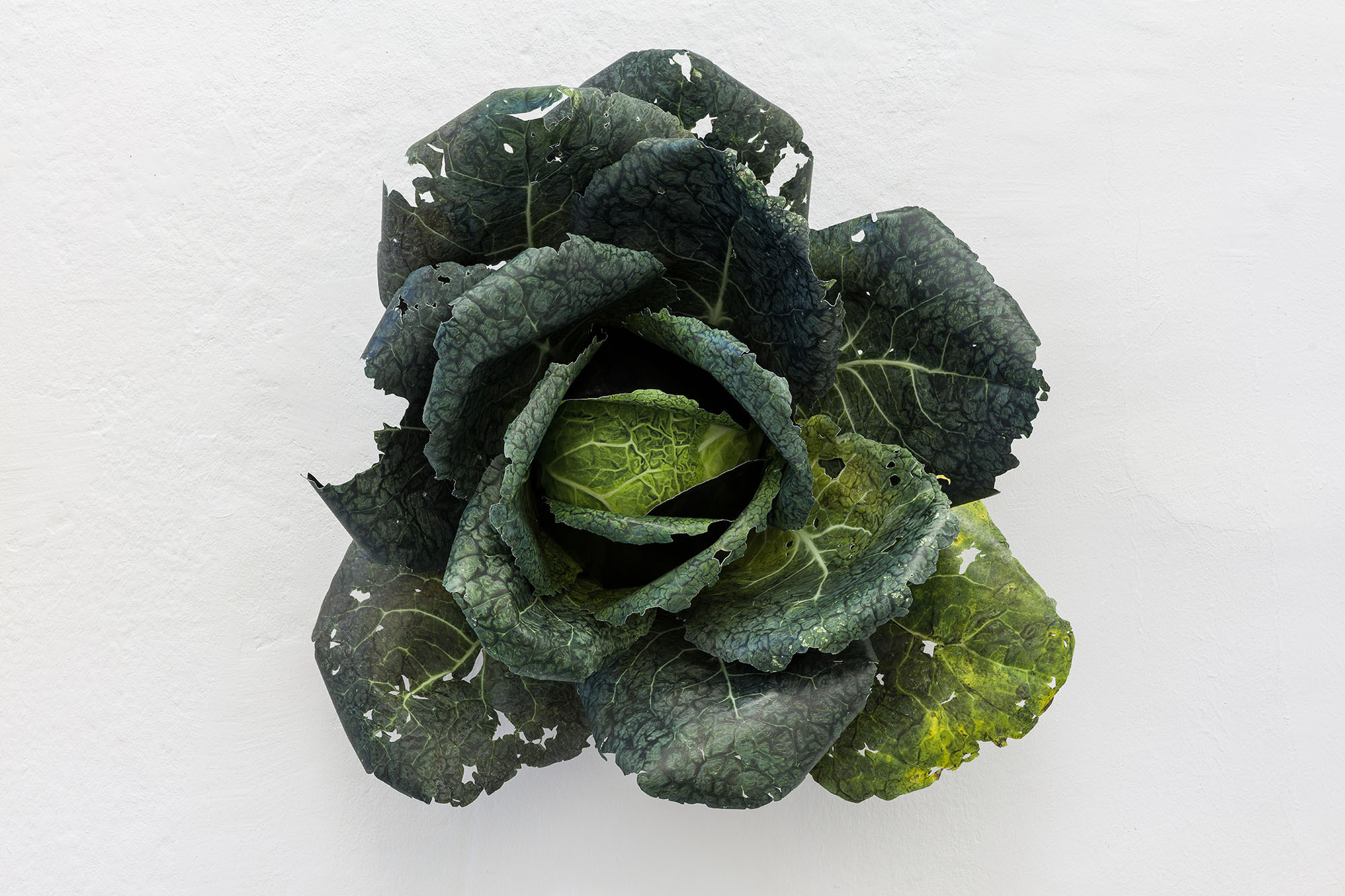—
Julija Zaharijević
Oh no! The View
Invited by Olivia Coeln
Two life-size cabbage heads are fixed more or less directly in front of my head, sided by a row of three grayscale paintings of holes in walls. I recognize the move of fixing floral paper objects on the wall from Julija’s exhibition at Alienze earlier this year, when petals of flowers resembling roses carried images of cityscapes. Both cabbages and paintings refrain from representing anything but exactly what they depict, asking to be considered in that way: in and of themselves.
A cabbage head refers to the body by way of being called ‘a head’ – a result of its round shape and similar weight. If cut open, a cabbage head will show circuitous patterns not unlike those of a brain. The mind gathers relations and differences from light caught by the eye, referring them to its understanding of forms. The mind’s eye is the mental faculty of conceiving imaginary or recollected scenes.
So, what could these objects be? They might be a symbolic conflation between mind and vision: They could be brains with worm-eaten leaves of neural networks spreading out, like thoughts around them. They could be 360-degree eyelashes protecting a panoramic eyeball. The cabbages protrude from the wall as 3D-inversions of the rough illusionism of the paintings. Because I have accepted the cabbages as references of my own thinking mind and recording eye, the paintings become somber mirrors of my endeavors towards sense-making and identification.
Materially, the cabbages hold variations of activity – cutting, gluing, printing, lacquering – and juxtapositions of significance: There’s paper versus silk, cabbage versus flower – cheap, generous crop versus highway-symbol of love. There’s low culture versus fine art. The paintings, too, oscillate between categories – do we see a grayscale painting or do we see a dark hole in a white wall? Is this a termination of the gaze, a denial of representation, or is it very concrete figuration? In the beginning, I said that the works refrain from referring to anything outside themselves. As a triptych, however, the paintings do participate in a certain narration – one of repetition and rehearsal. Because they hang as three attempts, their story becomes one of going at it again and again. They don’t make ultimate claims about terminating the gaze – or painting as such, for that matter – but actually acknowledge the process of making things.
And now to the last sequence of mine. If I understand the hole-paintings as mirrors, they might be telling me something about the puncturing ability of my gaze: That by looking, I can break through things? I can see my way behind surfaces, I can reveal something hitherto hidden. In turn, that means something anxiety-provoking about being looked at by others. Oh no! The View is a hyper image of this drama. There’s conflict between being watched and feeling seen. There’s ambivalence about showing. There’s getting up and doing it – again.
–– Cecilie Nørgaard
Anfrage
Bitte hinterlassen Sie Ihre Nachricht hier
